Vicenza, what to see: 10 places in the city of Palladio
Vicenza, founded in the 2nd century B.C., prospered under Venetian rule from the early 15th century to the late 18th century. Famous for its architectural heritage, the city holds the title of UNESCO World Heritage Site thanks to the works of Renaissance architect Andrea Palladio (Padua, 1508 - Maser, 1580), who created the unmistakable style present in the city’s architecture. The palaces and residences, integrated into the medieval urban context, give an ensemble of buildings where Venetian Gothic alternates with Palladian classicism. In the heart of its historic center is the Palladian Basilica, symbol of Vicenza, and Lords’ Square, surrounded by palaces such as the Loggia del Capitaniato. Palladio’s most famous works include The Rotunda, a symbol of Palladian architecture, and the Olympic Theater, the architect’s last work and a marvel of Renaissance theater architecture. The city also consists of museums and art galleries that host permanent and temporary exhibitions featuring works by artists from the Renaissance past and contemporary artists. Among the most famous are, the Civic Museum in Palazzo Chiericati and the Gallerie d’Italia in Palazzo Leoni Montanari, which present a broad overview of the art of Magna Graecia, Veneto and Russia. Here are what 10 places not to miss you find yourself traveling to the city of Palladio.
1. Lords’ Square
Lords’ Square, in Vicenza’s historic center, traces its origins to the Roman forum and marketplace of the ancient city of Vicetia, always remaining the hub of business and leisure for the community. Today, the square is dominated by the Palladian Basilica and flanked by the Bissara Tower, which, located next to the Basilica, is considered one of the tallest structures in the city and houses a clock from 1378 that not only shows the hours but also the phases of the moon. Opposite the Basilica, the Loggia del Capitaniato, one of Andrea Palladio’s mature works, is built. Built between 1565 and 1572, the palace features stuccoes celebrating the victory in the Battle of Lepanto that took place in 1571. The name “dei Signori” derives from the choice of the lords of constituted power, such as the podestà and captain appointed by the Republic of Venice, to reside in the palaces in the square. Further evidence of Venetian rule over Vicenza is the column surmounted by the lion of St. Mark, erected in 1464, which was flanked by a second column with a statue of Christ in 1640.
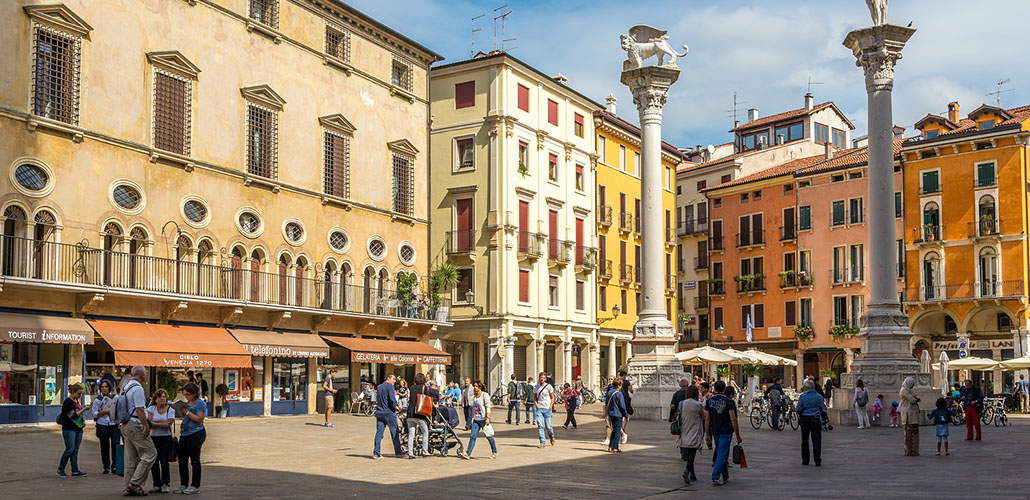
2. The Palladian Basilica
The palaces of Vicenza, located in the area of the Palladian loggias, have roots as far back as the second half of the 13th century. The Palatium vetus, the first seat of the Municipality and the magistracies, was located toward what is now Piazzetta Palladio and up to the archivolt leading to Piazza delle Erbe. In the eastern sector, on the other hand, the Palatium Communis housed the Salone dei Quattrocento. Later, numerous fires and historical damage led to the reconstruction of the buildings around 1450, using the lower masonry of the thirteenth-century palaces to erect a large hall with an inverted ship’s keel ceiling, originally made of lead-covered wood. By the 19th century, due to devastation by French and Austrian troops, the present Balisica palace was decaying. Architect Bartolomeo Malacarne (Vicenza, 1782 - Venice, 1842) therefore decided to restore its hull ceiling between 1823 and 1832, replacing lead with copper. However, during the 1945 bombing, the ceiling was set on fire and rebuilt in 1947 with wood and reinforced concrete. In 2002, the City of Vicenza launched an international competition for conservative and functional restoration, which was completed between 2007 and 2012. The Basilica reopened to the public on October 5, 2012, and was declared a National Monument on May 9, 2014.
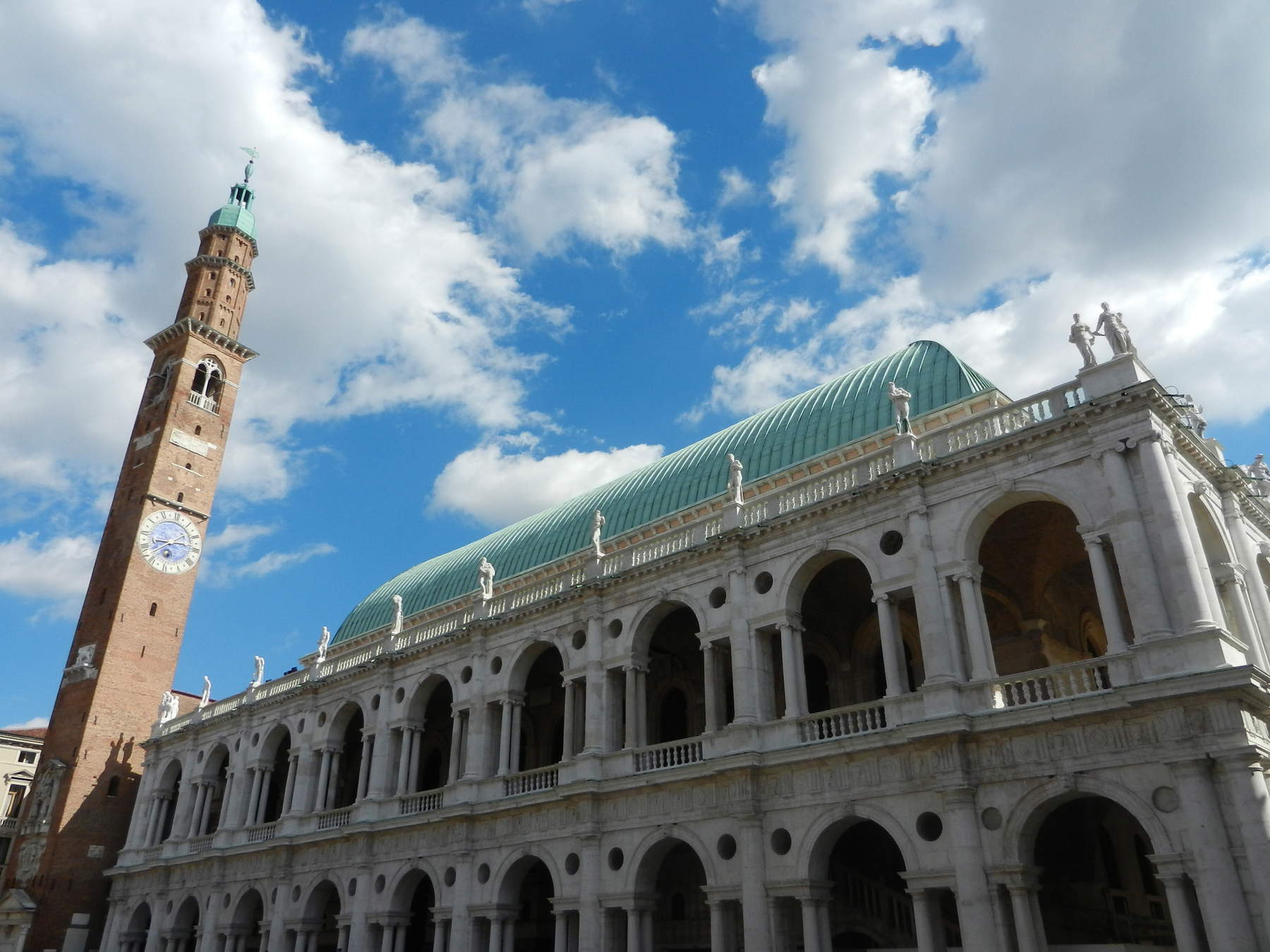
3. The Olympic Theater
The Olympic Theater was the last work of architect Andrea Palladio and was commissioned in February 1580 by the Accademia Olimpica, an association of distinguished Vicenza personalities in the fields of letters, science, and the arts, of which Palladio himself was a member. The theater’s design was inspired by the model of the theater all’antica, drawing on the Renaissance studies of Vitruvius. The theater spaces also served as a place of celebration for the Vicenza aristocracy, reflecting the classical ideals upheld by members of the Academy. To this day, access to the Olympic Theater is through the Odeo and Antiodeo, two large rooms designed by Vincenzo Scamozzi, the main protagonist of 16th-century Vicenza architecture after Palladio. The Odeo is decorated with frescoes by Francesco Maffei, dating from around 1637, depicting gods and allegorical figures. The Antiodeum, on the other hand, features a monochrome frieze dating from about 1595, reproducing theatrical stagings curated by the Accademia before the Olimpico was built and performances such as Oedipus the King and Ambasceria of the Japanese legates.
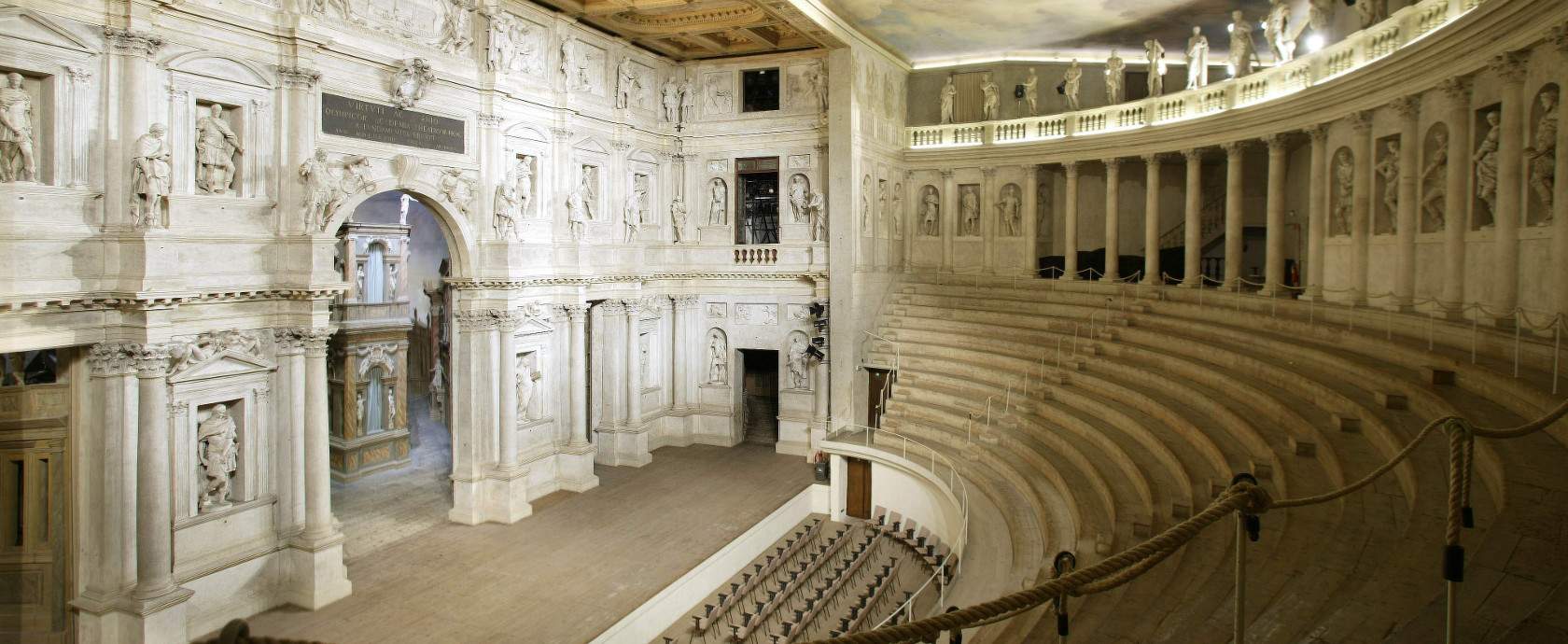
4. The Civic Museum at Palazzo Chiericati
Palazzo Chiericati, home of the Civic Museum, was designed in 1550 by Andrea Palladio for Girolamo Chiericati and was completed in the late 17th century. In addition to the museum’s collection, several frescoes decorating the structure can be found within its spaces. In the Sala del Firmamento and Sala d’Ercole on the ground floor, there are 16th-century fresco decorations by Domenico Brusasorzi, and in the Sala del Concilio degli Dei those by Battista Zelotti. On the piano nobile, inside the Sala delle Virtù Civili, there are frescoes by Brusasorzi, and those by Battista del Moro in the Sala della Colonna Traiana. In the seventeenth-century part of the palace, the ceilings decorated with white and gilded stuccoes house canvases by Cristoforo Menarola, theApotheosis of the Chiericati family and tondi with allegorical figures, and those by Bartolomeo Cittadella depicting Apollo on Parnassus with the lyre and Muses in the corners. The basement floor additionally uncovered the foundations of the ancient 14th- and 15th-century Chiericati cottages, along with spaces that once housed servants, such as kitchens and cellars, with the fireplace, well and barrel staircase still visible. Among the works the museum preserves are: the legacy of Paolina Porto Godi, consisting of 90 paintings (1825-1831); the legacy of Girolamo Egidio di Velo, consisting of archaeological finds from the Baths of Caracalla (1831); the legacy of Carlo Vicentini dal Giglio, with 364 paintings (1834); and the legacy of 33 drawings by Andrea Palladio, donated by Gaetano Pinali (1838).
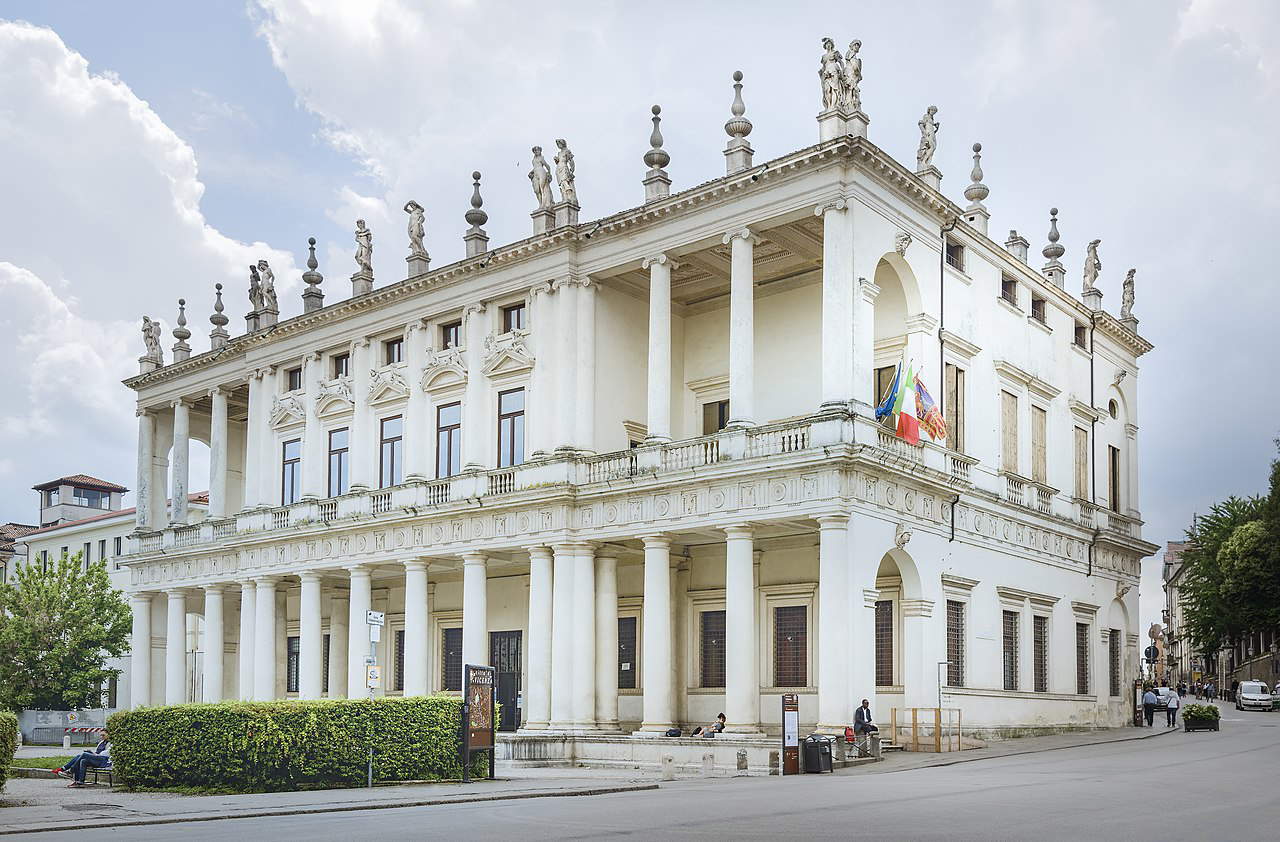
5. Gallerie d’Italia - Palazzo Leoni Montanari
Located in Vicenza’s historic center, Palazzo Leoni Montanari is part of Le Gallerie d’Italia, the museum hub of the Intesa San Paolo group, which is also present in other Italian cities such as Milan and Naples. Inside, Le Gallerie d’Italia presents temporary exhibitions ranging from ancient to contemporary art, in dialogue with the frescoes and iconographic decorations of the palace itself and the permanent collections. The museum collection offers several sections, including Attic and Magna Graecia ceramics and the Venetian 18th century, with works by Pietro Longhi and vedutists, transporting visitors to the atmosphere of the era of the Serenissima. In addition, the collection of Russian icons, one of the most significant in the West, gives a journey to the Orthodox religion with a new museographic presentation. Palazzo Leoni Montanari invites visitors to discover the history of local patronage and the ancient myths represented, with detail to Apollo and Hercules, the “tutelary deities,” embodied in the palace’s decorations.

6. Giardini Salvi and Loggia Valmarana
The 16th-century park of the Salvi Gardens, located at the west end of Corso Palladio, belonged to the Valmarana family until the first decade of the 19th century. In 1592, the family decided to open it to the public, but it was soon closed again. Today, the gardens house statues and two loggias in the Palladian style, distinctive of Vicenza’s architecture: the 16th-century Valmarana loggia overlooks a small waterway that once defended the city walls. The other, the 17th-century Longhena loggia, is located further south and was a meeting place for members of the Accademia Olimpica in centuries past. Later acquired by the Salvi family in the 19th century, the gardens became municipal property in 1907. In 1994, the Loggia Valmarana was added toUNESCO ’s World Heritage List along with the city’s other Palladian monuments.
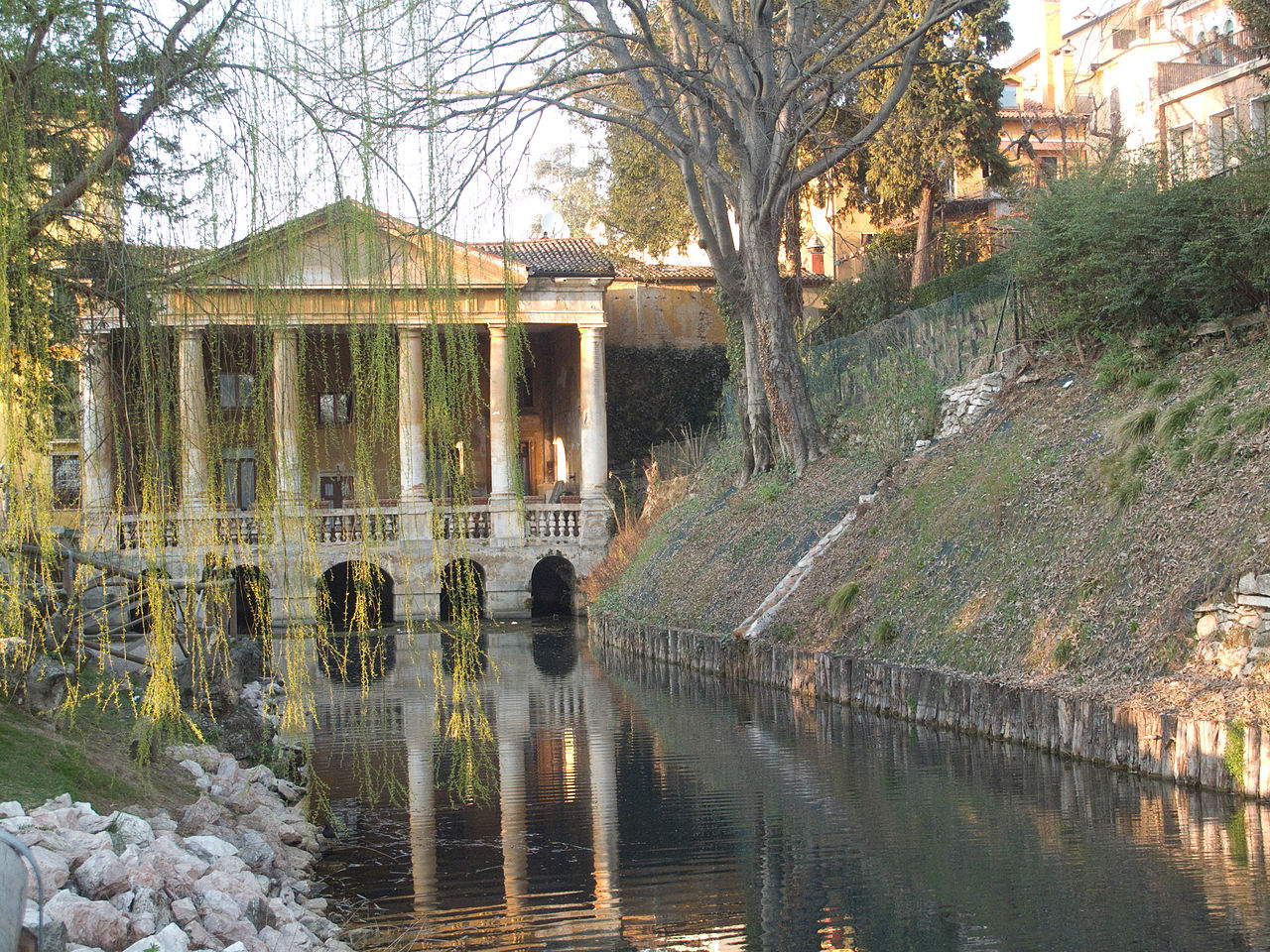
7. The Basilica Sanctuary of the Madonna of Monte Berico
The origin of the Sanctuary of Monte Berico dates back to two apparitions of Our Lady to Vincenza Pasini, in 1426 and 1428, years marked by the plague epidemic. Our Lady promised an end to the plague and asked that a church be erected there. In 1428 therefore, the first late Gothic church and a small convent were built to accommodate a religious community dedicated to assisting pilgrims. Between 1493 and 1498, the convent was enlarged, while in 1475 the church was extended at the hands of Lorenzo da Bologna. Later in 1562, Palladio designed a modern church with a central plan, but the project was abandoned. In 1578-79, the architect added classical elements, followed by further extensions in 1590-91, now demolished. The Baroque church was later built by Carlo Borella, while between 1825 and 1852 Antonio Piovene designed the new bell tower, causing the destruction of Lorenzo da Bologna’s choir and damage to the adjoining sacristy. A few years later, in 1860-61, Giovanni Miglioranza redid the facade of the original church. To date, the interior of the church preserves several works of art, including the Virgin with the Four Evangelists and the Baptism of Christ by Alessandro Maganza, and the Pietà by Bartolomeo Montagna, dated to the early 16th century.
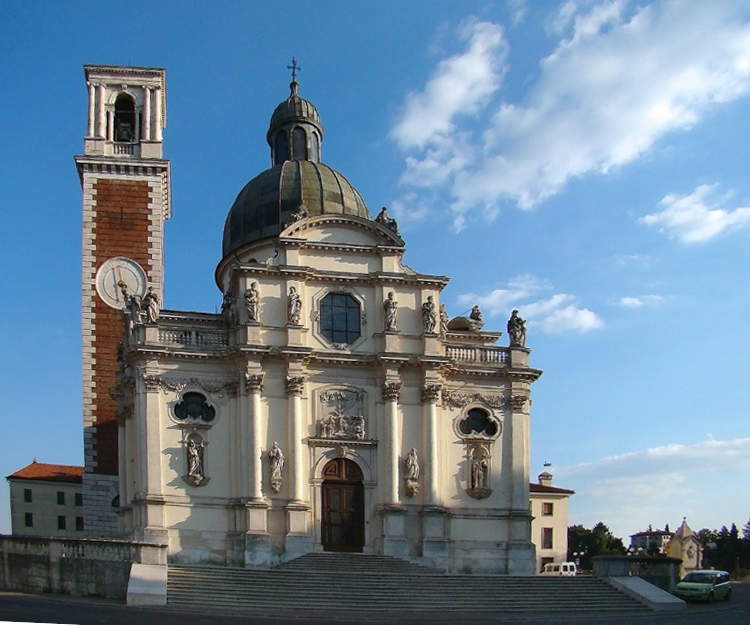
8. Villa Valmarana ai Nani
Villa Valmarana ai N ani is a complex of three buildings set in a vast period park. The Palazzina, built in 1669, along with the Foresteria and Scuderia from 1720, is surrounded by rose gardens, an Italian garden with a scenic backdrop and well, and a carpinata. Both structures are frescoed by Giambattista and Giandomenico Tiepolo, commissioned in 1757 by the building’s owner, Giustino Valmarana. Its name comes from the statues of the 17 stone dwarfs, originally scattered in the garden but now placed on the surrounding wall. The statues are related to the legend of Princess Layana, allegedly created by Francesco Uliaco and inspired by Giandomenico Tiepolo. Built in 1669 by the lawyer Giovanni Maria Bertolo and later inherited by his daughter Giulia, a nun at the monastery of Ognissanti in Padua, the villa was later acquired by Giustino Valmarana in 1715. Its beauty lies mainly in the work of the Tiepolos: his father mainly frescoed the Palazzina with themes from the patron’s favorite books, while his son designed the paintings in the Foresteria, leaving the Stanza degli dei dell’Olimpo to his father. Inside the villa’s central hall hangs a portrait of Andrea Palladio, attributed to the painter Giovanbattista Maganza, although its attribution is not entirely certain.
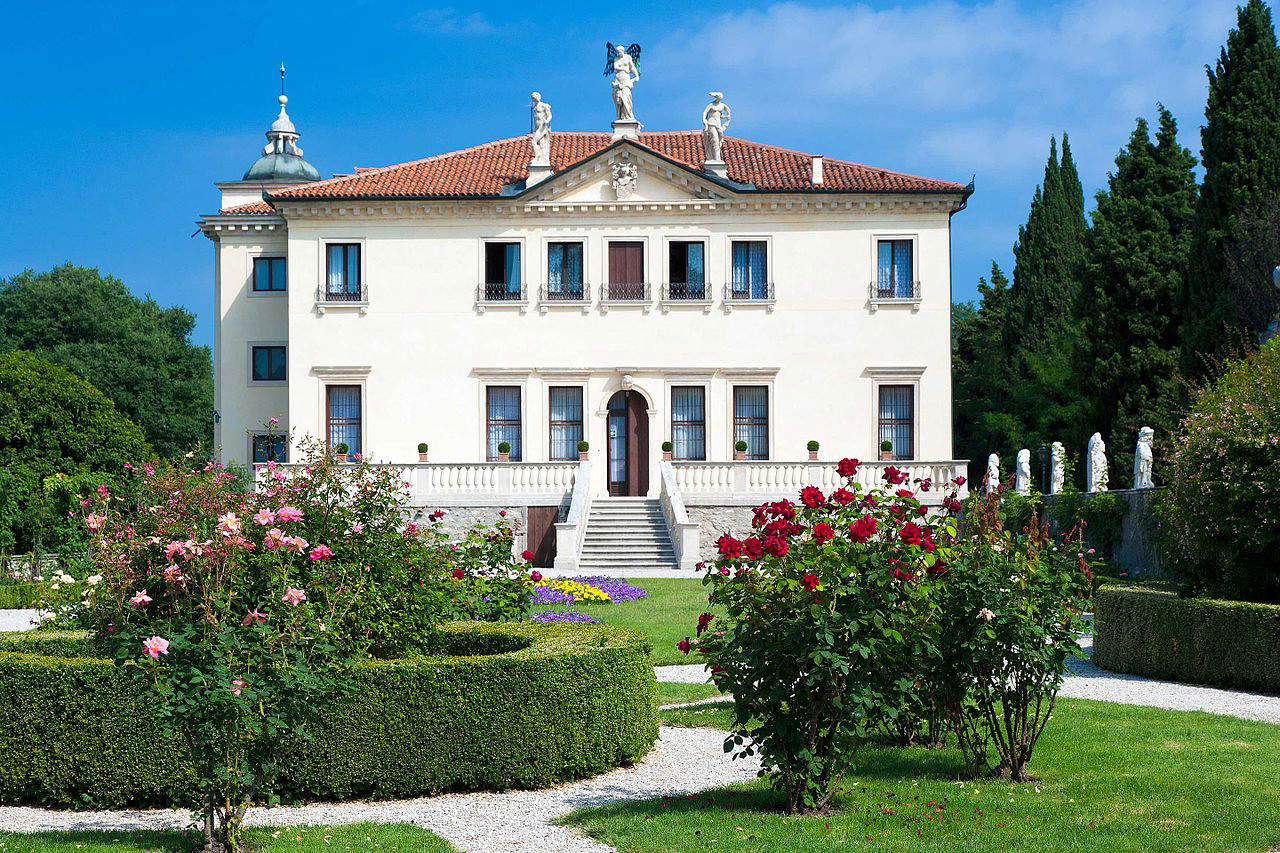
9. The Rotunda
TheRotunda, designed by Andrea Palladio at the height of his career, was commissioned by the Vicenza nobleman Paolo Almerico (1514-1589), a clergyman who in 1565 commissioned Palladio to build his new residence on a hill on the outskirts of Vicenza. The retreat was to serve both as a highly visible and symbolic place of representation and as a bucolic retreat away from the city’s aristocracy. It was later completed by the Capra brothers, hence the other name by which it is known (Villa Almerico Capra, or Villa Capra). The Rotunda combines the agricultural functions of a rural Veneto villa with the sacred aura of a pagan or Christian temple, placing 16th-century man at the center of its structure. To this day, its architecture, classical and modern together, has become an icon of balance and harmony, a unique design model. Inside, the sculptures are the work of Vicenza-born Lorenzo Rubini, while the ceilings of the four corner rooms and the dressing rooms on the main floor, as well as the domed vault, were frescoed in the late 16th and early 17th centuries by Alessandro Maganza with allegories of religion and virtue. Louis Dorigny, a French painter, is the author of the frescoes on the walls of the central round room, where eight giant Olympian deities rise in an illusionistic architecture that deceives the eye.
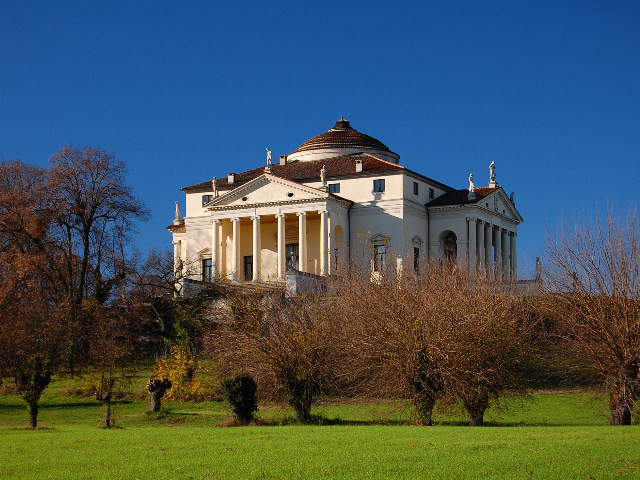
10. The Naturalistic Archaeological Museum
The Naturalistic-Archaeological Museum is located in the cloisters of the old Dominican convent in Vicenza’s historic center. The museum space is divided into two sections: Naturalistic and Archaeological. The Naturalistic section illustrates the characteristics of the territory, famous for the uniqueness of its fauna and flora, with a focus on the Berici Hills. The Archaeological section, on the other hand, holds artifacts that tell the story of the Vicenza area from prehistory to the Lombards. The part devoted to Prehistory presents an important collection of stone tools, attesting to the presence of man in the Berici Hills since the Middle Paleolithic. Of value are Neolithic and Bronze Age finds from the Fimon Valleys, including square-mouthed vases from Molino Casarotto. The Iron Age is represented by votive materials, such as copper figured laminettes; The Roman Age includes finds from the Roman theater in Berga and the cryptoporticus in Piazza Duomo, as well as amphorae and mosaics from Vicenza. A collection of Roman statuary, on the other hand, donated by Girolamo Egidio di Velo in the 19th century, enriches the museum display.

 |
| Vicenza, what to see: 10 places in the city of Palladio |
Warning: the translation into English of the original Italian article was created using automatic tools. We undertake to review all articles, but we do not guarantee the total absence of inaccuracies in the translation due to the program. You can find the original by clicking on the ITA button. If you find any mistake,please contact us.



























